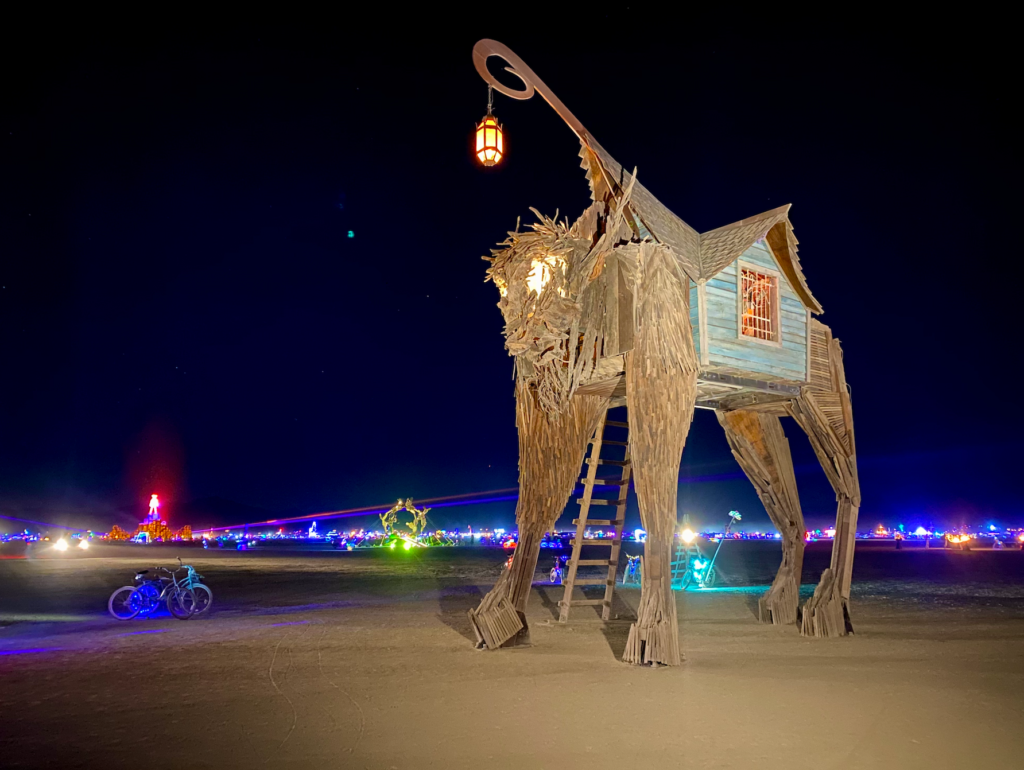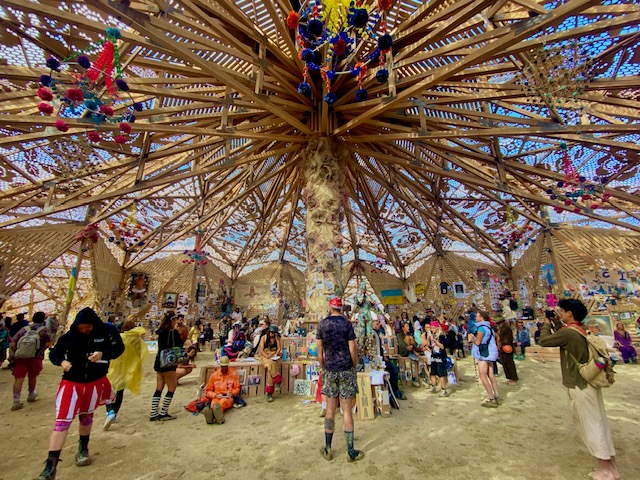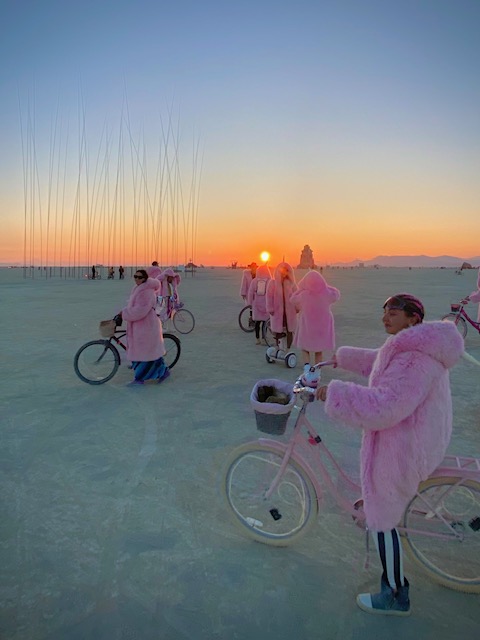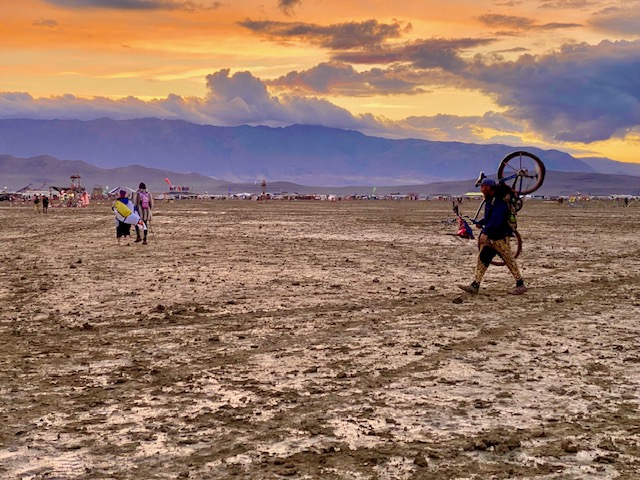Last month we profiled Recovery Bike Shop’s owners’ experience with Burning Man. It was written before they left and was released just as reports around the globe were telling a story of the deluge of rain wreaking havoc on the event. We had a lot of responses to the story and felt it would be good to have a follow up. Josh Blanc was able to reconnect with Seth Stattmiller and get the lowdown.


For Seth the best part was the mud. His Camp was stuck with amazing, terrific people who couldn’t leave and had no cell service. They started talking to each other more than usual. Burning Man tries to create this type of environment but it is still staged, he said, “The rains and mud really made this radical self-reliance really happen.”
In 12 years of Stattmiller and Elizabeth Richardson going to the Nevada desert event, they had an hour of rain altogether. This time there were days of rain. While they were prepared for so many other potentials the camp was never prepared for water. Seth was going around the 7,000 square feet of the camp trying to get the water off the tent roof. The portable toilets were really bad this year, with a sticky eight inches of mud inside. Usually they are immaculate as part of the 10 principles of civic responsibility.
“Bike wheels pick up mud, cars dig themselves down. They both bring themselves down so there were some major challenges,” Seth said. But through it all the Burning Man community has a saying: ‘Fuck your Burn.’ It’s like saying ‘have a good day!’”
Seth discussed a lot of behind the scenes issues and politics that showcase the challenges of the Burning Man ethos. There are 10 Principles that guide the event. One has to do with commodification.

In the past people, could pre-rent bikes for the event and pick them up at Burning Man, since commodification at the event is strictly prohibited. This year the rules were changed and the pre-rental was deemed as against the 10 principles. So Recovery Bikes was not able to bring as many bikes and only 14 people instead of the previous 70. They lost money through the process but Seth said it was still a worthy cause. Josh asked if the spirit of Burning Man could be recreated somewhere else. He said, “So much is replicable.” He said community is the most important thing. “The camp they brought exists outside of Burning Man.” They can get together outside of the event for an hour or two but it is different and only a short time at a cabin or other places one can find. The big challenge is “You are committed at Burning Man, so that is the hard part — to replicate for 10 days — in many other settings.”
One of Seth’s big ideas from his Burning Man experiences is what he calls the Disaster Recovery bike shop. They could build a trailer full of 350 bikes ready to ride and bring it to a town wiped out by hurricane or fire. They’d give the bikes away for a while and support them. When able to charge a little, it becomes the first business of that town as it comes back, and would transition to local ownership. He is hoping to find funding such as through grants for the idea to develop the mindset of bikes as viable transportation in a place that has been through a disaster, primed to understand that climate change is real and they have to do something about it. For more information:
Burning Man Camp Info Night Oct 12, 7 p.m., Recovery Bike Shop, 2504 Central Ave. NE
Learn about what it takes to go to Burning Man, from Hammer and Cyclery camp leads Seth
Stattmiller and Elizabeth Richardson. Hear the horror stories from the mudpocalypse 2023. Find out why it’s considered an arts festival, not a music fest. Get your questions answered. Maybe even commit to joining the camp in 2024. All are welcome, even if you have no intention of ever going to Burning Man.
Article by Josh Blanc, photos courtesy of Recovery Bike Shop


